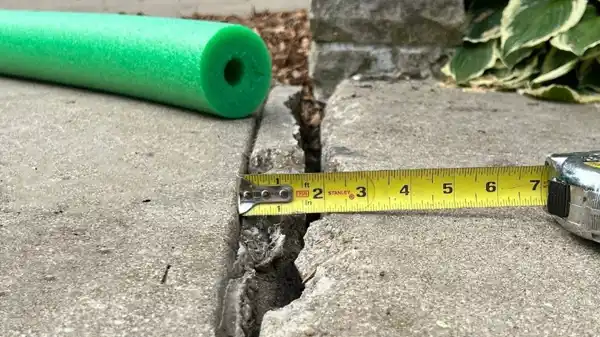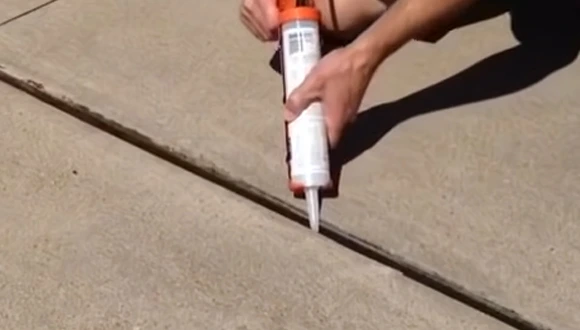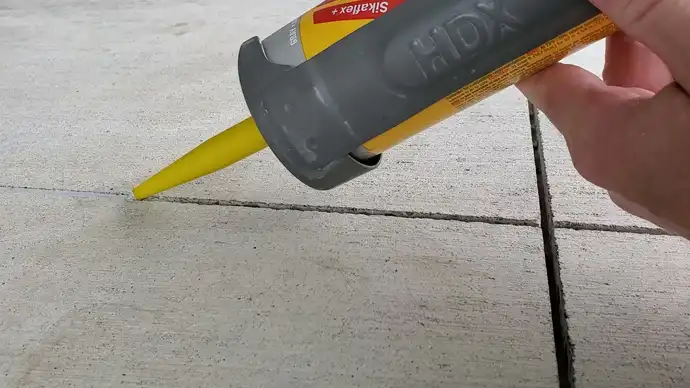Many buildings and structures have expansion joints installed in them. These control joints allow the concrete to expand and contract without cracking.
But what is the quantity of sealant needed? To measure the quantity of sealant required for an expansion joint, you’ll first have to determine the dimensions of the joint. Once you have those measurements, you can use the formula (Sealant Quantity Needed =L×W×D) or a sealant calculator to figure out how much sealant you’ll need to fill the joint.
With this piece of writing, we’ll explain how to calculate the amount needed for an expansion joint. Thus, keep reading out for more guidelines.
How to Calculate Sealant Quantity Required in Expansion Joint in Concrete?

To figure out the quantities of sealant material required to fill an expansion gap in concrete, you will need to take several measurements.
- First, you will need to determine the total distance length that needs to be sealed.
- Decide the width of the gap that needs to be filled or the width of the sealant that needs to be applied. You should also note the depth of the gap or the thickness of the sealant you would like to use.
- Once you have all these measurements, you can multiply the total length by the product of the width and depth to calculate the amount of sealant you require.
You can then use the formula L x W x D, where L is the total length of the joint, W is the width of the joint, and D is the depth of the gap.
In this example, we are sealing a 100 cm wide and 150 cm tall joint with a 0.5 cm expansion joint gap and a depth of 1.0 cm. This means that our total length (L) will be 2 x (100 cm + 150 cm) = 500 cm.
Plugging these values into our formula gives us a result of 500 cm x 0.5 cm x 1.0 cm = 250 cm3, or 250 mL. This is the amount of sealant you will need to fill the expansion joint.
Sealant Quantity Needed =L×W×D
=500 cm×0.5 cm×1.0 cm
=250 cm3
=250 ML
In Other Words
Suppose we want to know how much concrete or silicone sealant we need to fill a gap with a depth and width of 7 millimeters. We can easily get that measurement by dividing the amount of the contents of a milliliter container by the product of the cross-sectional size of the gap in millimeters.
For example 500 ML ÷ (7 mm × 7 mm) = 10.2 meters. In other words, we need a tube of concrete sealant of 500 ML that can cover around 10.2 meters of the gap. This method is efficient because it only requires us to know the tube size and the gap’s dimensions.
It is important to note that this method is only an estimate and that actual coverage may vary depending on the concrete sealant used and the surface conditions. These straightforward methods will ensure that you have enough material to seal the expansion joint and prevent further degradation.
Other Way To Calculate The Quantity Of Sealant

The following are some simplified steps that you might find helpful if you want to estimate the volume of sealant you will need for a joint expansion system in concrete.
Measuring the Joint
The first step is to measure the joint’s width and depth. To do this, you’ll need a measuring tape and a level. First, hold the level against one side of the joint and make a mark at the top and bottom of the level.
Then, measure from the top mark to the bottom mark and record that measurement. Next, do the same thing on the other side of the joint. Lastly, measure from one side of the joint to the other and record that. You should now have three measurements: two for width and one for depth.
If you want a proper example, follow the guideline described above to get the measurement of an expansion joint. It will help you get an accurate result.
Using a Sealant Calculator
Now that you know the dimensions of your joint, you can use a sealant calculator to determine the amount of sealant necessary to fill it. There are many different sealant calculators available online. Search for “sealant calculator,” and you’ll find several options.
Most calculators will ask for the width and depth of the joint along with the width of the bead (the thickness of sealant that will be left behind after applying). Once you have input all that information, hit “calculate,” and you’ll be given a quantity estimation.
3 Precautions While Calculating Sealant Quantity

While calculating the sealant quantity for expansion joints, there are a few things to keep in mind to avoid any mistakes.
Make Sure You Know The Dimensions
Before embarking on any home improvement project, it is important to ensure that you have accurate measurements. This is especially true when working with concrete, as even a small error can significantly impact the final product. When measuring the width of a joint, be sure to take three different measurements, one at the bottom, one in the middle, and one at the top.
Then, take the average of these three numbers as the official width measurement. The same process should be used when measuring the depth of the joint. Once you have taken accurate measurements, you can be confident that your concrete pavement will turn out just the way you envisioned it.
Take Into Account The Shape of the Joint
The shape of the joint is one factor that can impact the volume of sealant needed. For example, a U-shaped joint will require more sealant than a V-shaped one. The joint’s depth and width must be considered. If the joint is shallow, less sealant will be required to fill it.
Conversely, a deep or wide concrete joint will need more sealant. It is also important to consider the material used to fill the joint. Some materials expand more than others, so choosing a filler that will not over-expand and cause destruction to the surrounding area is necessary.
Considering all of these factors, it is possible to calculate expansion joint sealant quantities with accuracy.
Consider The Climate Conditions
Climate conditions are one of the most important aspects to bear in mind while calculating the amount of expansion joints to be sealed. Temperature and humidity can greatly impact how much joint filler is needed. If it is very cold, the sealant will take longer to cure and require more time to reach its full strength.
In contrast, if it is very hot and humid, the sealant will cure more quickly and will not need as much time to reach full strength. So, it is important to consider the climate conditions when making your calculations.
Do concrete expansion joints need to be sealed?
To help control cracking, expansion joints are usually included in concrete structures. Expansion joints are gaps that prevent cracks in concrete as it expands and contracts. Although expansion joints are necessary, they can also source water leaks.
Water that seeps into the contraction joint system can cause the surrounding concrete to deteriorate, eventually leading to cracks. Concrete expansion joints should be sealed with a flexible sealant to prevent this from happening. You can also utilize a backer rod if needed. This will provide a barrier against water infiltration, helping to prolong the life of the concrete.
What size concrete slab needs an expansion joint?

The general rule of thumb is that expansion joints ought to be installed twice or thrice in feet, the thickness of a concrete slab in inches. So if your slab is 6 inches thick, the slab can be 12 to 18 feet long or wide without needing an expansion joint.
You risk a crack from expansion and contraction pressure if you go larger. Of course, there are other factors to consider, such as the type of concrete and the climate. This general guideline should give you a good starting point for deciding when a construction joint is necessary.
Ensure That You Calculate The Sealant Effectively
If you take into account the dimensions and shape of the joint and other important factors mentioned in our post, you can avoid making any mistakes that could end up costing you time and money. With a little effort and attention to detail, calculating the amount of sealant needed for expansion joints can be a straightforward process.
We hope our resources have provided you with all the information you need to start. But, if there is anything else we can do to help, please do not hesitate to contact us. We would be more than happy to assist you further. Thank you for your dedication to reading this article with such attention.
